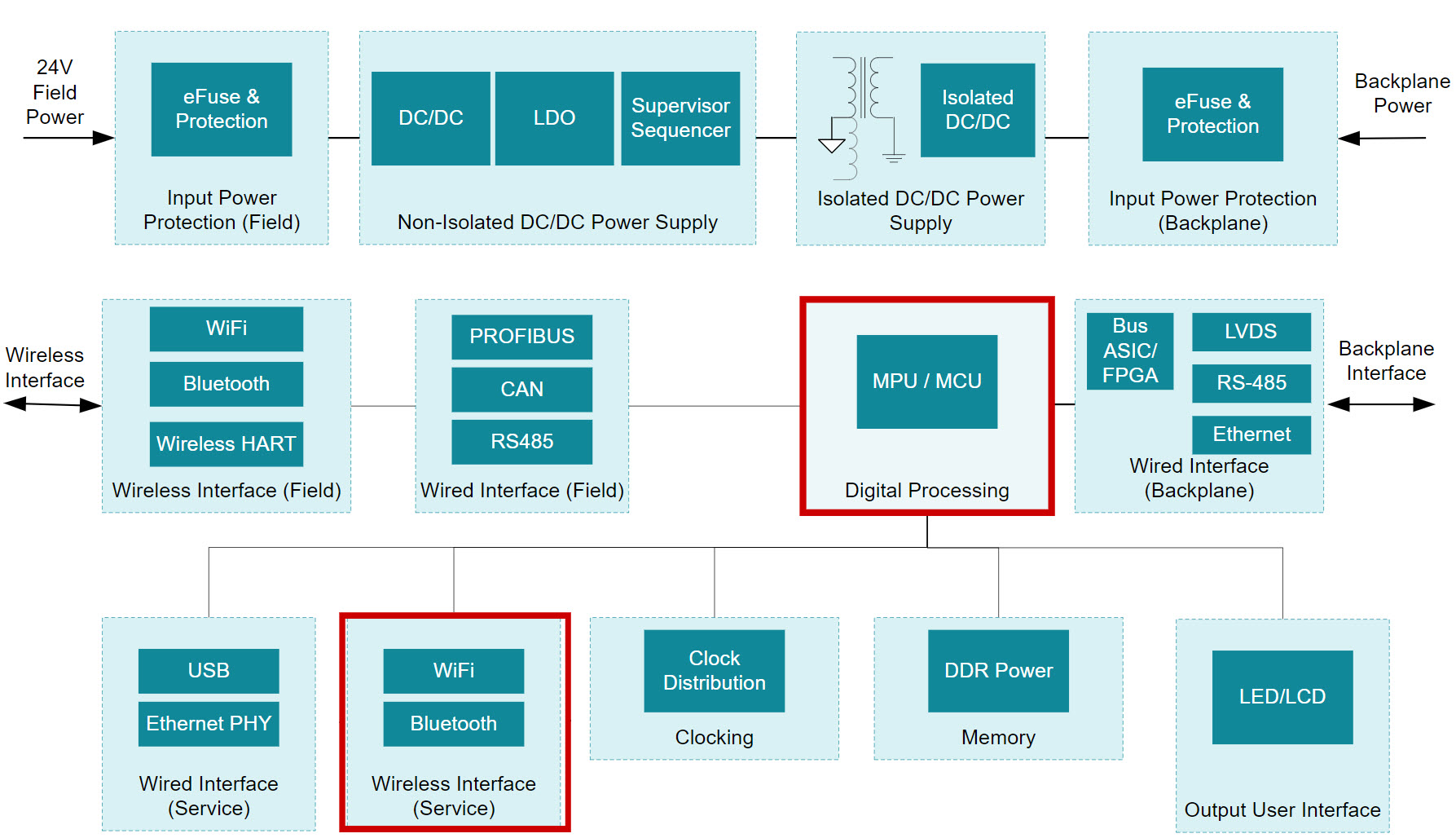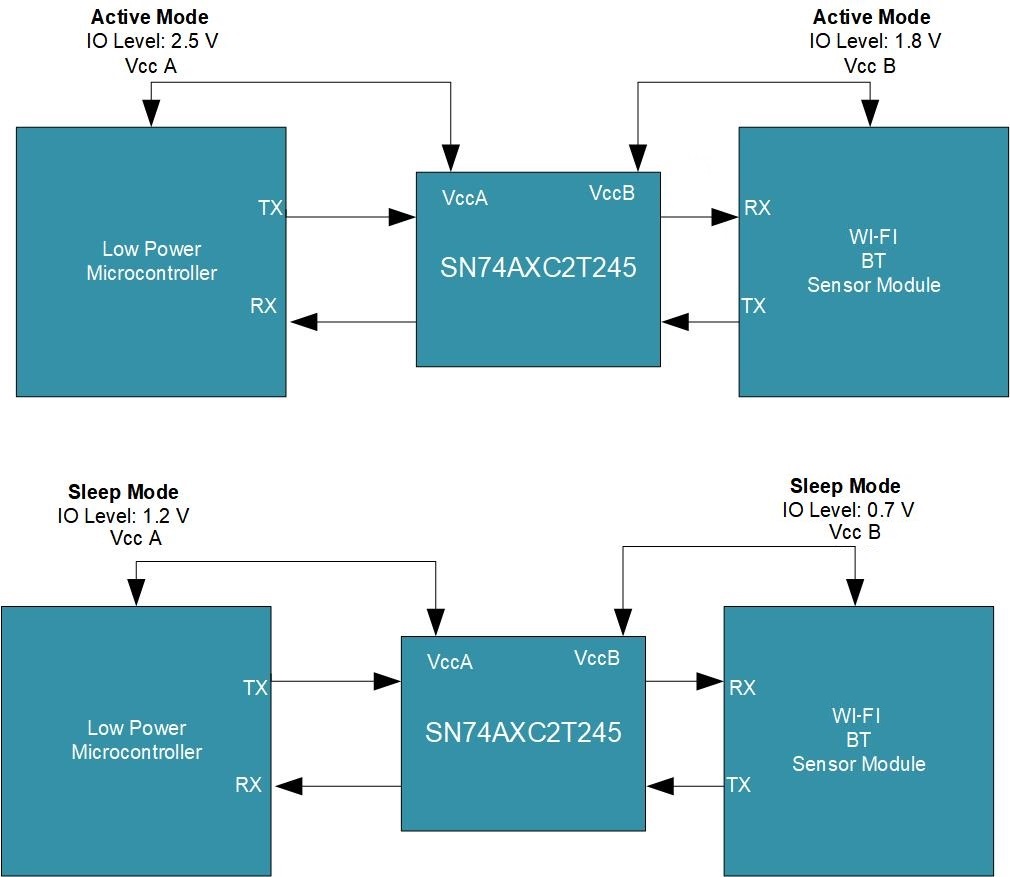SCEA102 May 2021 SN74AXC2T45
Application Brief
Implementing deep-sleep modes for Internet-of-Things (IoT) communications modules is becoming a key design approach for maximizing battery life. A key design challenge facing designers, who want to implement deep sleep modes, is differing input/output (I/O) voltage levels that are common among low-voltage devices and their different operating modes. For example, a low power sensor I/O may operate at 1.8 V when active but the I/O can drop to below 1 V during deep-sleep mode to conserve the battery. New standards are taking advantage of deep sleep modes to extend battery life. For example, the new WiFi-6 standard has a new feature called Target Wait Time (TWT) which allows the access points and client nodes, such as IoT modules, to negotiate preset wake and transmit schedules. Target Wait Time based scheduling enables battery powered devices to enter deep-sleep for extended periods, significantly increasing battery life.
How can a design engineer bring together the core components of communications module designs and still take advantage of their low-power capabilities to implement deep sleep modes? The simple answer is to use low-power level-shifter devices like the AXC level-shifter family from TI that not only supports low-power operation, but also supports shifting I/O levels down to 0.65 V (3.3 V to 0.65 V). The AXC level translator devices enable design engineers to implement low-power level shifting between core components for interfaces such as SPI, UART, GPIO, and virtually any other push-pull interface as well as the low-voltage I/O levels associated with ultra-low power modes of these devices.
The ability of the AXC family to support voltage levels down to 0.65 V enables wireless battery-powered communication module IoT applications to enter deep sleep battery-savings modes that can limit I/O levels to sub 1 V. In addition, the AXC devices are available in bit counts from one to eight bits with the lower bit count single- (SN74AXC1T45) and dual-channel (SN74AXC2T45 and SN74AXC2T245) devices available in very small μQFN packages that are conducive to board space limited designs common in IoT. See the Logic and translation landing page at www.ti.com/logic for more information.
 Figure 1-1 Communications Module Block
Diagram
Figure 1-1 Communications Module Block
Diagram Figure 1-2 Low-Voltage Translation Use
Case Between MCU and Wireless Peripheral
Figure 1-2 Low-Voltage Translation Use
Case Between MCU and Wireless Peripheral| Device | Channels |
|---|---|
| SN74AXC1T45 | 1 Channel Translator |
| SN74AXC2T245 |
2 Channel Translator |
| SN74AXC4T774 |
4 Channel Translator |